Among all the diseases known to humanity, they may be the most common diseases of the support engine device. It is unlikely that there is a person more than 40 years old who would not experience the problems with your spine, they do not complain about community or muscle pain. The cause of this phenomenon usually becomes a seating lifestyle, when with years, with reducing engine activities, salts and other harmful substances are deposited in joints that disrupt the functionality of bone system. It is generally accepted that the diseases of the supporting and engine of orat appear only in the people of the ripe age, but, however, in recent years, young people are often diagnosed with such a disease. It is quite difficult to treat such diseases, especially when degenerative - dystrophic changes that affect neighboring cartilage, bones and nerve tissues occur in tissues. Among the numerous diseases that violate the structure of bones, a special place is given as cervical osteochondrosis, which is considered the most common disease of our time and finds not only in people with the ripe age, but also young people under the age of 35.

The osteochondrosis of the cervical region is a progressive disease, thus not premature treatment and later search for doctors - spin, can lead to human disability. What are these insidious disease? What are the symptoms of cervical osteochondrose and how to deal with this disease?
How does cervical osteochondrose develop?
Cervical osteochondrosis is a progressive disease characterized by degenerative - dystrophic changes in intervectors serving deformations, changing their structure, which causes numerous pronounced symptoms. Risk of developing osteochondrose The cervical region are people who lead the sedentary lifestyle or whose professional activity is associated with the body in one position. In terms of the frequency of osteochondrosis, the damage to the spine of cervix is classified for a second after lumbosacral osteochondrose. The uniqueness and complexity of the disease is that the lesion of the cervical region is almost always affected by the nerve roots of spinal nerves and interfaced, as a result of whose large and small vessels are defeated from the brain supply.
The cerital caption section has a complex structure and consists of 7 vertebrates, each of which performs numerous functions: supports the head, turns, bends the neck and other important functions. There are interviolent disks between vertebral, which form spine flexible and durable, and the interverters themselves consist of fibrous rings, within which it is the meladine core. Cervical spines fit close to each other, which is why even less physical activity can cause their shift, which in turn causes squeezing blood vessels and nerves. In the Grlić's spine are the spine of the arteries that are responsible for the blood supply to the brain. When compressing blood is disturbed, the brain does not receive a sufficient amount of vital substances, which undoubtedly leads to their defeat and development more complications, which can lead to patient or even death.
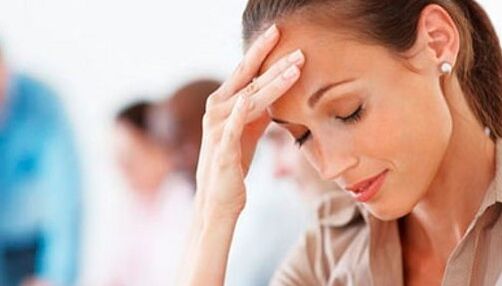
Main causes of cervical osteochondrosis
Despite the prevalence of this disease and achievement in modern medicine, the pathogenesis of osteochondrose of the cervical spine is not fully studied. It is known that the disease can develop in the background of metabolic impaired processes in the Grlić spine, which over time leads to a change in the structure of interverter discs and bodies of vertebrae. Among other things osteochondrose, the cervix is the most dangerous, because during its development, the compression of nervous roots of spinal cord and blood vessels, which undoubtedly leads to violations of the brain killed. In the pathogenesis of disease, doctors differ several provocative factors that can lead to disease development.
- Sedentary lifestyle.
- Breach of metabolic processes in the body.
- Salt deposition in the region of the Grlić Matica.
- Improper or unbalanced diet;
- Long-term body interruption in one position: PC work, driving a car.
In addition to the factors that can lead to cervical osteochondrosis, experts differ people who are at risk for the development of this disease.
- Genetic predisposition.
- Injury to the neck spine.
- A long-standing or periodic body hypothermal.
- Hormonal imbalance.
- Chronic diseases of the supporting and motor device: rheumatism, scoliosis, system lupus erythematosus.
- Excess weight.
The reason for the development of cervical osteochondrosis can be other causes, but in any case, the disease should be treated according to the first signs.
How to recognize the osteochondrose of the cervical region and what are its signs?
Clinical signs of cervical osteochondrose osteochondrose of the cervical spine develops slowly. Symptoms of the disease depends on the degree and number of damaged vertebralines and hitting nerve endings. The main symptom of the disease is the pain of different intensity in spine, neck, lower back to other bodies. Only a doctor can diagnose "cervical osteohondrosis" after the test results, because the diversity of the disease clinic often reminds other pathologies, but everyone can doubt this disease.
- The neck of the neck, which gives the back of the head, ears, frontal, forearm, chest, shoulders. The painful sensation of different intensities improve minimal loads or turns their heads.
- Armeness of the upper and lower extremities, ignition, tingling.
- Headache, dizziness.
- Fault.
- By darkening in the eyes, "flies" in front of the eyes.
- Lightly sharp crossing heads.
- Noise in the ears.
- The numbness of the language.
- Breach of coordination.
- Hearing reduction, vision sharpness.
- Pain in the heart.
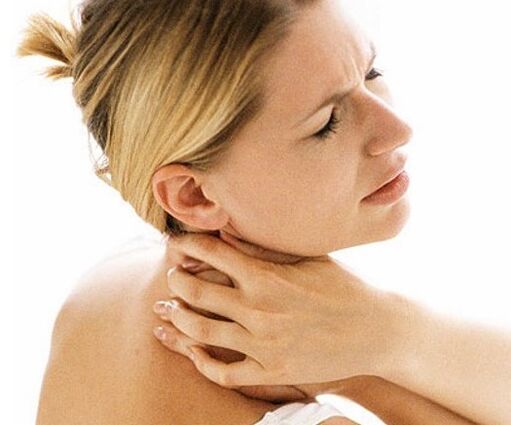
Clinical signs of osteochondrose of the cervical region, expressed and appear as disease and progress. Physicians dealing with the treatment of this disease differ several cervical osteochondrose syndromes, each of which has its characteristics and are read depending on the damaged nerve spine.
- Vacation syndrome - develops as a result of the tightening of the first pairs of nerve endings in the grlic spine. The patient feels strong neck pain, which is given in the shoulder, lower back, shoulder and forearm.
- Spinal Artery syndrome features a pulsating headache in the back of the head or temporal region. I irritate-reflecting syndrome-ignition in the neck and nap, which is enhanced when you turn your head, sleep or cough, gives chests and shoulder.
- Cardian syndrome is a whole group of symptoms that initially reminds of the symptoms of angina pectoris. This syndrome develops in the event of damage to the spine of a diaphragmatic nerve or a large chest muscle. Main signs are considered crushing pain in the heart that do not pass after taking nitroglycerin. Such pain can take several hours, intensify when driving or deep breathing. In the patient, such symptoms cause panic, because they resemble a heart attack.
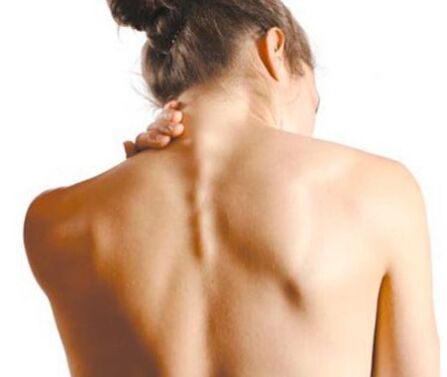
Symptoms of cervical osteochondrose
Cervical osteochondrose - Symptoms and treatment directly depend on the damaged nerve spine. The number of cervical roots is 8, and the cervical spine is 7. Each grvobard nerve is above vertebra and with damage to its own symptoms.
If there was a defeat of the first and second thunderstricken spine (CI-II), then the sensitivity of the rear head that attracts pain in the Parietal and Occipital region will disrupt.
The lesion of the nervous end (C3) is extremely rare, but still, when damaged, the patient feels stiffen by the door, in the area where he happened. Speed, language sensitivity is also reduced.
Lesia C4 nerve spine causes pain and numbness in a collar or shoulder. They notice disorders in the respiratory system, heart ache.
If the vertebral segment 5. Departments are disturbed, the patient will feel the pain that spreads on the shoulder, the outer surface of the shoulders, the sensitivity of the upper and lower extremities is also disturbed.
Gust the roots of C6 and C7 the most common phenomenon among patients. Patients feel neck pain, blade, forearm, back, lower back, hand sensitivity, fingers are disturbed.
When the nerve spine is affected, then the pain will spread around the neck, back, elbow and give it to the lower limbs. The stiffness of small fingers on the hands and legs is noticed, skin sensitivity is practically absent. The legs and hands of the hand acquire a bluish shade, due to the damaged blood circulation.
In addition to the pain syndrome, the patient with cervical osteochondrose also complains of other diseases described above in the signs of the disease: a damaged vision, dizziness, unconsciousness, etc.
Media physically upbringing for cervical osteochondrose
It is necessary to perform and implement physiotherapy exercises only after consulting the doctor. In addition, the movement should discuss each execution with an expert, because the incorrect door or limb position can damage the health and deterioration of treatment. Consider a few safe exercises that can and should be performed for patients with cervical osteochondrose.
- In a lying position on a flat surface - spread your hands on the side. Raise your hands, turn your body with light movements a little left, okay. The left palms of their hands touch the right palm and vice versa. Do such exercises 5 - 6 times.
- Stretch your hands along the body in a lying position on your stomach. Try to relax your muscles and slowly turn your head to the left and then right. It is necessary to try to make the edge of the ear to tap the floor. Such an exercise can be exported, as in the photo. Execute 8 - 10 times.
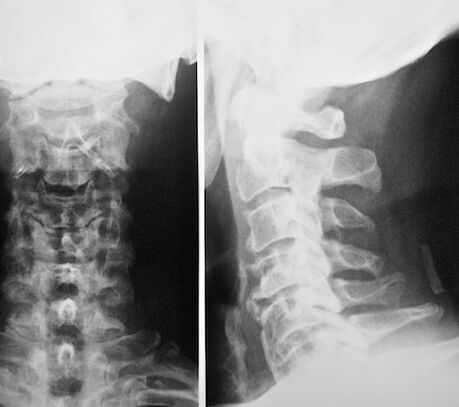
- Lying down on your stomach, try to lean your chin in your palm, the neck muscles must be relaxed. Up to 5 times.
- Drink your head a little and then gradually lower it. The neck muscles will resist, so that exercise must be carefully performed. Repeat the exercise 5-6 times.
- You have to get up exactly, straighten your shoulders. Then slowly turn your head to the right and then on the left. So, 5 - 6 times.
- Spiri fingers on the back of the head, put your elbows together, put your sublast beard. Try to raise a reduced forearm as much as possible. Repeat such exercise 5 - 6 times.
- Take your knees. With slow movements, raise your head and freeze the body down, stretch your hands forward. So, 5 - 6 times.
Physical physical education is quite effective in treating cervical osteochondrone, but all exercises must be regularly and properly. Of course, the condition does not improve from first grade, so you need to be patient.
Treatment of osteochondrose of cervical sections with folk drugs
Traditional medicine also showed its efficiency in the treatment of cervical osteohondrosis, which has been collected a large number of recipes in their arsenal in decades to help reduce the symptoms of the disease. Treatment of osteochondrosis with folk drugs is the use of plant and animal products for external or internal use.
Recipe 1. Honey from cervical osteochondrose. You will need 1 - 2 teaspoons of natural bee honey, 2 mama tablets. Honey and mom should be warmed up, put on a warm scarf and fasten to neck for night. Honey has a pronounced anti -infalmatory, biostimulating feature, so that it can perfectly complement the treatment of this disease.
Recipe 2. Celery from osteochondrose. 4 - 5 grams of celery should be poured with 1 liter of boiling water, insist 2 - 4 hours, strain and take 1 large spoon 3 times a day.
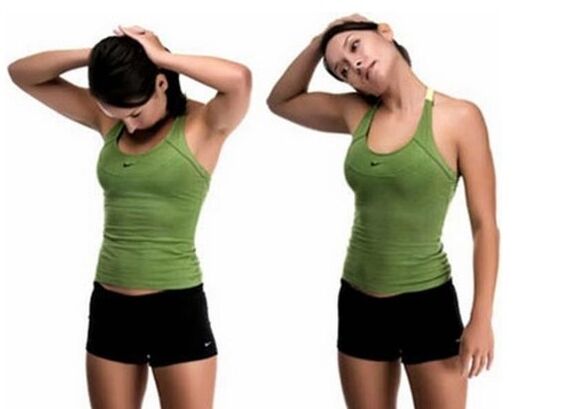
Recipe 3. Decociation of Chamomile and olive oil. It will take you 30 grams of chamomile flowers, 0, 5 l olives without sparkling oil. Caming flowers should be pouring into oil, put on a small fire, bring to cooking and let it cool. You need to insist on decoction 2 days, then strain it through the full and rub the sick areas with the resulting oil. Along with the chamomile, other plants can be used: Celandin, Calendula, Sv. John's Wort. If there is no olive oil, then you can take a sunflower.
There are other means of traditional medicine that helps mitigate the symptoms of cervical osteochondrose. However, it is important to remember that such treatment is effective only at the beginning of disease development and can only be used in complex treatment with traditional methods.
Prevention
The prevention of osteochondrose doors is an active lifestyle. In cases where there is a location for the development of this disease, it is necessary to periodically visit the doctor - orthopedic. No less important place occupies food, which should be useful, rich in vitamins, minerals and other useful substances. Prevention or correction of excess weight, as well as regular physical exercises, reduce the risk of developing cervical osteohondroise several times.

















































